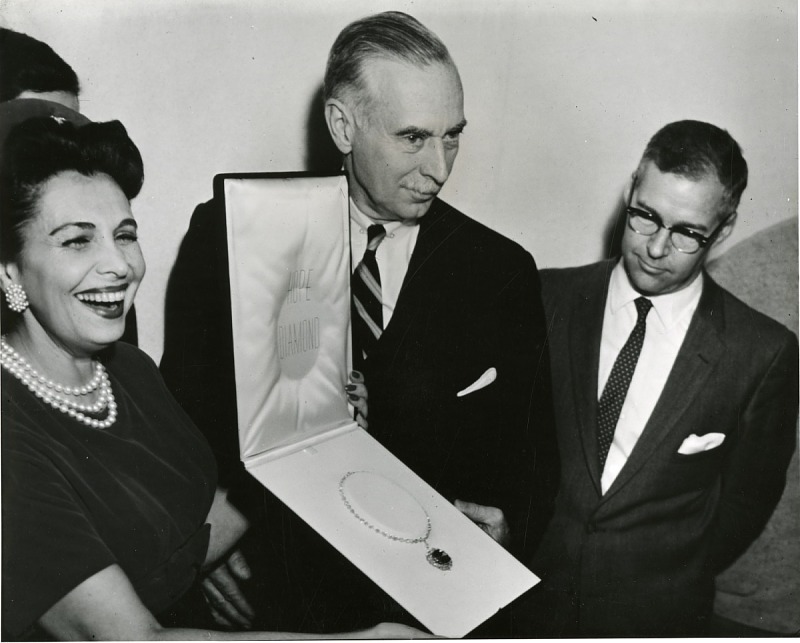Fifty Years Ago Today—Hope Diamond Officially Presented to Smithsonian’s National Museum of Natural History

Mrs. Edna Winston presenting the Hope Diamond to Secretary Leonard Carmichael and George Switzer, November 10, 1958. Smithsonian Institution Archives, Record Unit 95, Box 57, Folder: 11
On November 10, 1958, the Hope Diamond was officially presented to the Smithsonian’s National Museum of Natural History by Mrs. Harry Winston and received by Smithsonian Secretary Leonard Carmichael and George Switzer, curator of mineralogy. The donor, noted jeweler Harry Winston, was not present at the official ceremony; under the terms of his insurance policy, he could not be photographed. The diamond was sent from New York City in a plain, brown package by registered mail.
The 45.52-carat blue Hope Diamond is the centerpiece of the National Gem Collection on display at the National Museum of Natural History, and it attracts the attention of millions of visitors each year. It is the largest deep-blue diamond in the world. Located in the Harry Winston Gallery, the Hope Diamond rotates within its specially constructed glass vault. Fiber-optic lighting vividly illuminates the Hope and enables museum visitors to see, at its best, the color and vitality of this rare blue diamond.
“The Hope Diamond laid the foundation for the National Gem Collection, immediately became an icon and made the Natural History Museum a major national destination,” said Jeffrey Post, curator of the National Gem Collection and museum mineralogist. “While the legend says the Hope is bad luck, it has brought us good fortune!”
Before Harry Winston owned the diamond, Evalyn Walsh McLean purchased it from Cartier, the French jewelry firm, in 1911. Through the years, McLean and the Hope Diamond became almost inseparable. (McLean’s father-in-law, John R. McLean, was the owner of The Washington Post.)
The diamond, which was originally 115 carats, was purchased in India, and, in 1668, was sold to King Louis XIV of France. It was likely re-cut after it was stolen during the French Revolution. Henry Philip Hope purchased it in 1830 in London, thus giving it its namesake.
# # #
SI-484-2008
Randall Kremer
202-360-8770
